
In this week’s Claire Chats video talk, I look at the practice of touching for the king’s evil, including how and when it started, what it involved and when it stopped. It’s a fascinating subject and I enjoyed researching it.
[Read More...]
In this week’s Claire Chats video talk, I look at the practice of touching for the king’s evil, including how and when it started, what it involved and when it stopped. It’s a fascinating subject and I enjoyed researching it.
[Read More...]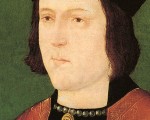
1500 – Birth of Alexander Ales (Alesius, Aless), Scottish theologian and reformer, at Edinburgh. His mother was Christina Bigholm, and his actual surname seems to have been Alan or Allane. He changed his name when he went into exile, choosing “Alesius”, meaning “bird”, or in this case, “exile”.
1512 – Birth of Henry Fitzalan, 12th Earl of Arundel, son of William Fitzalan, 11th Earl of Arundel, and Anne (née Percy), daughter of Henry Percy, 4th Earl of Northumberland. At his baptism, Henry VIII stood as his godfather. He served Henry VIII as Deputy of Calais, Privy Councillor and Lord Chamberlain.
1536 – Sir Nicholas Carew was elected to the Order of the Garter at the annual chapter meeting at Greenwich, rather than George Boleyn, brother of Queen Anne Boleyn.
1564 – Traditional birthdate of William Shakespeare, the Bard. It is not known on what date Shakespeare was actually born but he was baptised at Stratford-upon-Avon on 26th April 1564, and baptism usually took place around three days after birth.
William Shakespeare also died on this day in 1616. He was buried at the Holy Trinity Church, Stratford-upon-Avon, in the chancel.
23 April, St George’s Day, was the traditional day for announcing new appointments to the Order of the Garter, the highest order of chivalry in England.
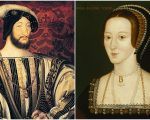
Thank you to Tudor Society member Lynne for asking this question: “When Anne Boleyn was a teenager in the court of Francis I, did she have a bit of a romance going on with the king?”
I (Claire Ridgway) will answer this one as I have done in-depth research into Anne Boleyn’s life, including her time in France.
Anne Boleyn left England in the spring or summer of 1512 to serve at the court of Margaret of Austria in Mechelen. In August 1514, Anne’s father, Thomas Boleyn, wrote to Margaret to inform her that Anne had been appointed to serve Mary Tudor, sister of Henry VIII. Mary was travelling to France to marry King Louis XII of France and Anne had been chosen as one of her maids of honour. It is not known when Anne arrived in France, whether it was in time for Mary’s marriage on 9th October or whether it wasn’t until her coronation in the November, but Anne served Mary from that time until Mary returned to England in the spring of 1515. Anne was retained by the new queen consort of France, Queen Claude, wife of Francis I, and served her until late 1521 when Anne was recalled to England in late 1521.
So, Anne spent seven years in France, serving at the royal court, but was she linked to Francis I romantically during that time?
[Read More...]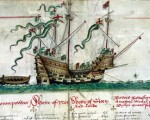
16th April:
1512 – The Mary Rose began her first tour of duty in the English Channel on the hunt for French warships.
1521 – German Protestant reformer, Martin Luther, appeared in front of Emperor Charles V at the Diet of Worms. He had been summoned to the diet to either recant or reaffirm his religious views.
1550 – Birth of Francis Anthony, alchemist, apothecary and physician. He was probably born in London and was the son of Derrick Anthony, a goldsmith. Anthony was imprisoned twice for practising as a physician without a licence, and is known for his aurum potabile (drinkable gold), made from gold and mercury, which he claimed had amazing curative powers. His works included Medicinae chymicae et veri potabilis auri assertio (1610).
1570 – Baptism of Guy Fawkes, conspirator, at the Church of St Michael le Belfrey in York.
1578 – Burial of Thomas Drant, Church of England clergyman and poet. He was part of the “Areopagus” intellectual circle at court, but also had an ecclesiastical career and was chaplain to Edmund Grindal, Bishop of London. He is known for his work on prosody (metre), and actually drew up some rules concerning it, which were mentioned by Edmund Spenser, Gabriel Harvey, Philip Sidney, Edward Dyer and Fulke Greville.
1587 – Death of Anne Seymour (née Stanhope), Duchess of Somerset and wife of Edward Seymour, Duke of Somerset and Lord Protector during part of Edward VI’s reign. Anne was a reformer and a literary patron. She died at Hanworth Place and was buried at Westminster Abbey.
1595 – Death of Ferdinando Stanley, 5th Earl of Derby and literary patron. His sudden death caused rumours of poisoning and witchcraft, but nothing was ever proved. Stanley was patron of the Strange’s Men company of players, which probably included William Shakespeare, and he was also a patron of poets. It is thought that he also was a poet.
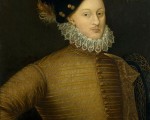
9th April:
1483 – Death of Edward IV at the Palace of Westminster. He was laid to rest in St George’s Chapel, Windsor Castle, on 20th April. His cause of death is unknown. It may have been caused by a chill, but he was known for overindulging in food and drink, and that would not have helped his health.
1533 – A delegation of the King’s councillors, headed by the Duke of Norfolk, visited Catherine of Aragon and informed her that Henry VIII was now married to Anne Boleyn. After they left, Catherine’s Chamberlain, Sir William Blount, 4th Baron Mountjoy, had to tell her that she had been demoted from Queen to Dowager Princess of Wales.
1557 – Cardinal Reginald Pole’s legatine powers were revoked by Pope Paul IV.
1582 – Death of Richard Bertie, evangelical, member of Parliament and second husband of Katherine Willoughby (other married name Brandon), Duchess of Suffolk, at Bourne. He had met Katherine when he became her Gentleman Usher. He was buried with Katherine, who died in 1580, at Spilsby.
1590 – Funeral of Ambrose Dudley, Earl of Warwick. He was laid to rest in the Beauchamp Chapel of St Mary’s Church, Warwick.
1626 – Death of Francis Bacon, Viscount St Alban, Lord Chancellor, politician and philosopher. It appears that Bacon died from inhaling nitre or opiates in a botched experiment.
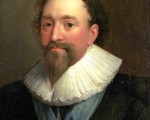
2nd April:
1502 – Arthur, Prince of Wales, son and heir of King Henry VII and Elizabeth of York, died at Ludlow Castle in the Welsh Marches. He was just fifteen years old, and had only been married to the Spanish princess Catherine of Aragon for four and a half months.
1536 – Anne Boleyn’s almoner, John Skip, preached a rather controversial sermon in front of the King. Skip spoke on the Old Testament story of King Ahasuerus “who was moved by a wicked minister to destroy the Jews” but Queen Esther stepped in with different advice and saved the Jews. In Skip’s sermon, Henry VIII was Ahasuerus, Anne Boleyn was Queen Esther and Thomas Cromwell, who had just introduced the “Act of Suppression of the Lesser Monasteries” into Parliament, was Haman, the “wicked minister”.
1552 – The fourteen-year-old Edward VI fell ill with measles and smallpox. Fortunately, he survived. His biographer, Chris Skidmore, believes that it was this bout of illness which suppressed the King’s immune system and which led to him dying of consumption (tuberculosis) on the 6th July 1553.
1559 – The Peace of Cateau-Cambrésis, ending the Italian Wars, was signed between Henry II of France and Elizabeth I of England.
1568 – Death of Sir Ambrose Cave, member of Parliament, Chancellor of the Duchy of Lancaster and Knight of the Hospital of St John of Jerusalem, at the Savoy. He was buried at Stanford after a funeral at the Savoy Chapel.
1571 – Death of Richard Onslow, lawyer, Solicitor-General and Speaker of the House of Commons. He caught a fever in Shrewsbury, while visiting his uncle there.
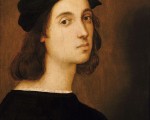
26th March:
1533 – Convocation was asked to pronounce on the validity of a papal dispensation allowing a man to marry his brother’s widow, the man and widow in question being Henry VIII and Catherine of Aragon.
1546 – Death of Sir Thomas Elyot, humanist scholar and diplomat. He was buried at Carleton Parish Church in Cambridgeshire. Elyot’s offices included Clerk of the Privy Council, High Sheriff of Oxfordshire and Berkshire, High Sheriff of Cambridgeshire and Huntingdonshire, and a commissioner in the inquiry into the monasteries before their dissolution. He also acted as a diplomat, visiting the court of Charles V in 1531, and was one of the men chosen to receive Anne of Cleves in 1540. Elyot’s works include the 1531 treatise “The Boke named the Governour”, the 1536 medical treatise “The Castell of Helth”, his 1538 “Latin Dictionary” and a number of translations.
1556 – Matthew Parker, Archbishop of Canterbury, and Edmund Grindal, Bishop of London, summoned one hundred and ten ministers to Lambeth Palace to get them to pledge their willingness to wear vestments, as worn by the man in front of them: Robert Cole, a former non-conformist who now complied. The outfit consisted of a square cap, gown, tippet, and surplice. They were also asked “to inviolably observe the rubric of the Book of Common Prayer, and the queen’s majesty’s injunctions, and the Book of Convocation” and to commit to these orders on the spot, by writing “volo” or “no volo”. 37 refused and were suspended.
1609 – Date of death for John Dee, astrologer, mathematician, alchemist, antiquary, spy, philosopher, geographer and adviser to Elizabeth I, given by John Pontois, a merchant who inherited some of Dee’s books. This date was backed up by Anthony Wood, who told Elias Ashmole that Dee had died at Pontois’ house in Bishopsgate Street. Dee was buried in Mortlake Church. The traditional date for Dee’s death is December 1608.
1618 – Death of John Bridges, Dean of Salisbury in Elizabeth I’s reign and Bishop of Oxford in James I’s reign, at Marsh Baldon, Oxfordshire. He was buried there.
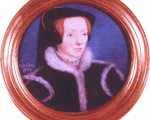
19th March:
1563 – Deaths of Arthur Brooke, translator and poet, and Sir Thomas Finch, knight-marshal, in the shipwreck of the Greyhound, off the coast of Rye in East Sussex.
1563 – Peace (Edict) of Amboise signed at the Château of Amboise by Catherine de’ Medici, as regent for her son, Charles IX. Catherine initiated this truce after the assassination of Francis, Duke of Guise, at the Siege of Orléans. The Edict ended the first phase of the French Wars of Religion and guaranteed the Huguenots religious privileges and freedoms. Peace did not last long, however.
1568 – Death of Elizabeth Seymour, Lady Cromwell. Click here to read more.
1577 – Death of Edmund Harman, former barber of Henry VIII, at Burford in Oxfordshire. He had retired there after Henry VIII’s death. Harman was buried at Taynton Church.
1590 – Baptism of William Bradford, separatist and founder of the Plymouth Colony, Massachusetts, at Austerfield in Yorkshire. Bradford was Governor of the colony for over thirty years.
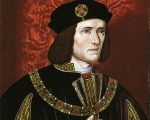
Thank you to William (Bill) for asking this question. His full question was: “Paul Murray Kendall’s book Richard The Third states that there was no chaplain available for services in the King’s army before the Battle of Bosworth. What does this mean? It seems incredible that Catholic soldiers would not hear Mass before going forth to battle.”
I forwarded the question to author and historian Nathen Amin, and in the meantime, I did some digging. I knew that Michael Jones said the same in his book Bosworth and that the information came from “The Crowland Chronicle”. I looked it up and found this bit in the chronicle:
[Read More...]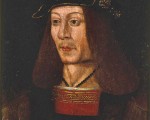
12th March:
1537 – Execution of William Haydock, Cistercian monk. He was hanged for his involvement in the Pilgrimage of Grace. Interestingly, his remains were discovered in the family’s home, Cottam Hall, in the early 19th century because his nephew had saved his body and hidden it there.
1539 – Thomas Boleyn, Earl of Wiltshire and Earl of Ormond, and father of Queen Anne Boleyn, died at Hever Castle, aged around sixty-two. He was laid to rest at St Peter’s Church, Hever.
1564 – Baptism of Christopher Bales, Roman Catholic priest and martyr. Bales was executed by hanging on 4th March 1590 in Fleet Street. Two others, Nicholas Horner and Alexander Blake, were executed at Smithfield and Grays Inn Lane for harbouring him.
1573 (11th or 12th) – Death of Edmund Brydges, 2nd Baron Chandos, soldier, politician, Lord Lieutenant of Gloucestershire and Vice-Admiral of Gloucestershire. He was laid to rest at Sudeley.
1628 – Death of John Bull, composer, musician and organ builder, at Antwerp.
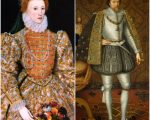
It is well known that when Elizabeth I died on 24 March 1603 at Richmond Palace, she was succeeded on the throne of England by her first cousin twice removed, James VI of Scotland. Although Elizabeth had consented to the execution of James’s mother, Mary, Queen of Scots, in 1587, the mainly cordial relations between the Scottish king and the English queen were undoubtedly influenced by James’s hope that he would eventually be named successor to Elizabeth. The Tudor queen had been notoriously reluctant during her forty-four-year reign to name a successor, but as her life drew to a close Elizabeth realised that the maintenance of peace in her kingdom depended greatly on a stable succession. The peaceful accession of James in the spring of 1603, however, has obscured the dynastic and political relevance of a forgotten noblewoman – Anne Stanley, later Countess of Castlehaven. In the twenty-first century, Anne is generally known not for her dynastic importance but for her testimony against her husband, which led to his execution for sodomy in 1631.
[Read More...]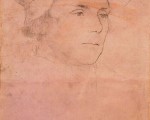
Richard Rich, 1st Baron Rich, we’re led to believe, was born in 1496. The dating of his birth comes from the fact that in 1551 he was said to have been around 54 years of age. He was born in Basingstoke, Hampshire. His father was John Rich, and his mother was Agnes, and it is believed that he may have had ties to the Rich family that was prominent in the Mercers’ Company during the 15th century. The connection came from his father John, for he owned a house in Islington, Middlesex, which he left to his son on his death in 1509.
[Read More...]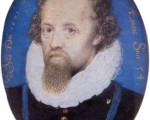
26th February:
1548 – Birth of courtier George Carey, 2nd Baron Hunsdon, son of Henry Carey, 1st Baron Hunsdon, and his wife, Anne. George was the grandson of Mary Boleyn, sister of Anne Boleyn.
1552 – Executions of conspirators Sir Thomas Arundell, Sir Michael Stanhope, Sir Miles Partridge and Sir Ralph Fane. Arundell and Stanhope were beheaded on Tower Hill, while Partridge and Fane were hanged. They were condemned as traitors after being accused of conspiring with Edward Seymour, Duke of Somerset, against John Dudley, Duke of Northumberland.
1564 – Christopher Marlowe, poet, translator and playwright, was baptised at St George’s Canterbury. Marlowe was the second child of John Marlowe, shoemaker, and his wife, Katherine. Marlowe’s works included “Tamburlaine”, “Dr Faustus”, “The Jew of Malta” and “The Passionate Shepherd to his Love”. Click here to see a Claire Chats video on Christopher Marlowe.
1608 – Death of John Still, Bishop of Bath and Wells, in the palace at Wells. He was buried in Wells Cathedral.
1619 – Death of Edmund Bunny, clergyman, preacher and theological writer, at Cawood, Yorkshire. He was buried in York Minster. His works included “The Whole Summe of Christian Religion” (1576), “A Book of Christian Exercise, Appertaining to Resolution” (1584) and “A Briefe Answer, unto those Idle and Frivolous Quarrels of R.P.” (1589), a response to Jesuit Robert Person.
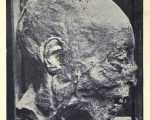
As today is the anniversary of the execution of Henry Grey, Duke of Suffolk and father of Lady Jane Grey, I thought I’d talk about his execution and a mummified head discovered in the 19th century that is said to be the duke’s.
[Read More...]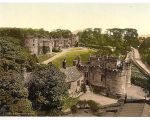
In my article on Margaret Clifford, Countess of Derby, I noted that Margaret has been neglected by historians and novelists alike. Both Margaret and her mother Eleanor Brandon, Countess of Cumberland, have been marginalised in both fiction and non-fiction, especially when compared with other royal women of the period such as Lady Jane Grey and her sisters, Lady Margaret Douglas and, of course, Henry VIII’s six wives. The academic and popular fascination with the Grey family is explicable in view of their dynastic importance during the reigns of Edward VI and Elizabeth I; during Edward’s reign, Jane Grey was named heiress to the throne and would have reigned as queen of England had it not been for the extraordinary success of Mary Tudor’s coup in the summer of 1553. Jane’s sister Katherine was widely regarded as a viable successor to Elizabeth I, which enraged and unnerved the Tudor queen. After clandestinely marrying Edward Seymour, Katherine was incarcerated in the Tower of London, her marriage declared invalid and her children deemed to be illegitimate. More recently, Lady Margaret Douglas has attracted the interest of historians and novelists; as the mother-in-law of Mary Queen of Scots and the grandmother of James I of Scotland, this interest is perhaps not surprising.
[Read More...]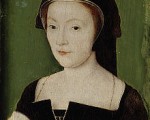
19th February:
1473 – Birth of Nicholas Copernicus, the Renaissance mathematician and astronomer, in Thorn, in the province of Royal Prussia, Poland. Copernicus is known for his theory of heliocentric cosmology, or the idea that the sun was stationary in the centre of the universe and that the earth revolved around it.
1547 – King Edward VI rode from the Tower of London to Westminster in preparation for his coronation the next day. Click here to read more.
1546 – William Cavendish was appointed Treasurer of the Privy Chamber. He later claimed that he had paid £1000 for the position.
1567 – The imprisoned Margaret Douglas, Countess of Lennox, was informed of the murder of her son, Henry Stewart, Lord Darnley, by William Cecil’s wife, Mildred, and Lady William Howard. The Spanish ambassador recorded that Margaret’s grief was such “that it was necessary for the Queen to send her doctors to her”.
1592 – The Rose Theatre, an Elizabethan playhouse, was opened in London on Bankside.
1598 – Death of Jasper Heywood, Jesuit and poet, in Naples. Heywood had been deported to France in January 1585, after being imprisoned in the Tower of London for treason, and was then summoned to Rome. He never returned to England.
1601 – Death of Thomas Fanshawe, at Warwick Lane. He was buried in the south aisle of Ware church in Hertfordshire. Fanshawe was an Exchequer official during Elizabeth I’s reign.
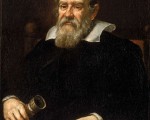
12th February:
1554 – Executions of Lady Jane Grey and her husband Lord Guildford Dudley for treason. They were buried in the Chapel of St Peter ad Vincula at the Tower of London.
1567 – Death of Sir Thomas White, founder of St John’s College, Oxford, and former Lord Mayor of London, at his property in Size Lane, London. He was buried in St John’s College Chapel.
1584 – Executions of five Catholic priests, including James Fenn. They were hanged, drawn and quartered at Tyburn. Fenn was beatified by Pope Pius XI in 1929.
1590 – Death of Blanche Parry, chief Gentlewoman of the Privy Chamber, at the age of eighty-two. She was buried in St Margaret’s, Westminster, with funeral rites which were usually reserved for a baroness. She has a monument in St Margaret’s and also one in Bacton Church, her home village in Herefordshire, which bears an inscription of twenty-eight lines of verse recording Blanche’s service to her beloved Queen.
1611 – Probable date of death of Sir Henry Lee, Queen’s Champion from c.1580 to November 1590. He was buried at Quarrendon in Buckinghamshire.
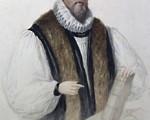
5th February:
1537 – Birth of diplomat Sir Henry Brooke, son of George Brooke, 9th Baron Cobham, and his wife Anne Bray. Anne Bray was a lady in waiting to Anne Boleyn, and there is controversy over whether she was the “Nan Cobham” who was one of the Queen’s accusers in 1536. In Elizabeth I’s reign, Brooke was made a gentleman pensioner and carried out embassies to Spain, the Low Countries and France for her. In October 1579, Elizabeth appointed him as her resident ambassador in France, until he was replaced by Sir Edward Stafford in 1583.
1556 – Treaty of Vaucelles between Philip II of Spain and Henry II of France. By the terms of this treaty, Henry II had to relinquish Franche-Comté to Philip, but the treaty was quickly broken.
1557 – Death of Sir William Portman, Judge and Lord Chief Justice of England and Wales from 1555. He was buried at St Dunstan-in-the-West, Fleet Street, London.
1576 – Henry of Navarre, the future Henry IV of France, abjured Catholicism at Tours, rejoining the Protestant forces, following his escape from Paris on 3rd February.
1605 – Death of Sir Edward Stafford, son of Sir William Stafford (Mary Boleyn’s second husband) and his second wife Dorothy Stafford. Edward was an MP and diplomat, and there is controversy over his “spying” activities during the Armada and exactly how much information he passed to Mendoza. He was buried in St Margaret’s, Westminster.
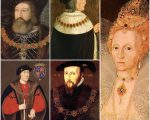
1 February seems to have been a rather busy day in the Tudor period and here are three events, linked to further reading about them…
1514 – Henry VIII granted the dukedom of Suffolk to Charles Brandon, his future brother-in-law, and also made Thomas Howard, 2nd Duke of Norfolk, and Howard’s son, also called Thomas, the Earl of Surrey. Charles Somerset was also made Earl of Worcester.
[Read More...]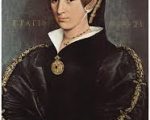
Elizabeth Seymour was a younger daughter of Sir John Seymour and his wife, Margery Wentworth. Her date of birth is unknown but is estimated to have been between 1511 and 1518. She married her first husband, Sir Anthony Ughtred, in January 1531; since sixteenth-century women could marry, at the earliest, at the age of twelve, realistically Elizabeth could have been born no later than January 1519. Such an early marriage, however, would have been extraordinary, since the Seymours were a respected gentry family, but they were not nobility. Historians have noted that Tudor noble- and gentlewomen tended to marry by the age of twenty. It is possible that Elizabeth served alongside her sister Jane in the household of Anne Boleyn, Henry VIII’s second wife, who became queen in 1533. Usually, the queen’s maidens were aged in their mid-to-late teens, although Jane herself would have unusually been around twenty-four years old when appointed to Anne’s household. For Elizabeth to have married Ughtred in 1531 and to have served the queen two or three years later would indicate that she was probably born no later than c. 1515.
[Read More...]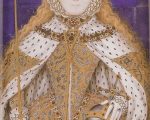
15th January:
1522 – Death of Richard Fitzjames, Bishop of London, in London. He was buried in the nave of St Paul’s.
1522 – Death of Sir John Heron, Treasurer of the Chamber to Henry VII and General Receiver to Henry VIII. He was buried at the Whitefriars, London.
1522 – Death of Richard Fitzjames, Bishop of London, in London. He was buried in the nave of St Paul’s.
1535 – Henry VIII declared himself head of the Church in England.
1555 – Death of Jane Dudley, Duchess of Northumberland and wife of John Dudley, Duke of Northumberland. Jane died in Chelsea, London, and was buried there. She outlived her husband, who was executed in 1553 after Mary seized the throne from his daughter-in-law, Lady Jane Grey.
1559 – Coronation of Elizabeth I at Westminster Abbey. Click here to read more.
1569 – Death of Catherine Knollys (née Carey), wife of Sir Francis Knollys and daughter of Sir William Carey and Mary Boleyn. Queen Elizabeth I was grief-stricken at the death of her cousin and friend, and gave her a lavish funeral at Westminster Abbey. Some believe Katherine to have been the illegitimate daughter of Henry VIII.
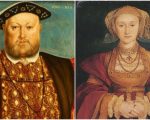
In today’s Claire Chat’s video talk, I look at Anne of Cleves’ marriage to Henry VIII and what happened between 6th January 1540, her wedding day, and 28th July 1540 when Henry VIII married Catherine Howard, his fifth wife.
[Read More...]
8th January:
1499 – Marriage of Louis XII and Anne of Brittany, widow of Charles VIII of France and the Queen Dowager. The couple had two surviving children: Claude, Queen of France, and Renée, Duchess of Ferrara.
1543 – Burial of King James V of Scotland at Holyrood Abbey, Edinburgh.
1570 – Death of Henry Clifford, 2nd Earl of Cumberland, at Brougham Castle. He was buried at Holy Trinity Church, Skipton. Clifford’s career included serving Henry Fitzroy, Duke of Richmond, at Pontefract Castle, being made Knight of the Bath at the coronation of Anne Boleyn, serving as Carver to Henry VIII in 1540, and being appointed to the Council of the Borders and the Council of the North. He was married to Henry VIII’s niece, Eleanor Brandon.
1571 – Burial of Mary Shelton (married names: Heveningham and Appleyard) at Heveningham Church, Suffolk. Mary was the daughter of Sir John Shelton and his wife Anne (née Boleyn), and wife of Sir Anthony Heveningham, then Philip Appleyard. Mary served Queen Anne Boleyn as one of her ladies.
1586 – Death of Sir George Seton, 5th Lord Seton, politician, Scottish nobleman and loyal supporter of Mary, Queen of Scots. He was a member of Mary’s privy council. Seton was buried in Seton Church, East Lothian.
1594 – Death of Sir Wolstan Dixie, merchant and Lord Mayor of London, in London. He was buried at the parish church of St Michael Bassishaw. Dixie served as Lord Mayor of London in 1585-1586.
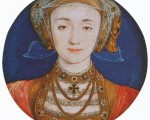
As tomorrow is the anniversary of Henry VIII’s fourth marriage, his marriage to Anne of Cleves, I thought I’d start a series of Claire Chats video talks on the marriage.
[Read More...]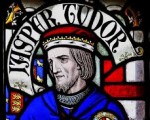
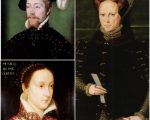
On this day in 1542, James V died at Falkland Palace in Falkland, Fife, Scotland, after being taken ill following the Scots’ defeat at the Battle of Solway Moss on 24th November. It is not known what killed him – some argue that it was a nervous collapse, and others that it was a virus.
While James was on his deathbed, his consort, Mary of Guise, gave birth to a daughter, and it was the six-day-old baby who became Mary, Queen of Scots on her father’s death. John Knox and the chronicler Robert Lindsay of Pitscottie both recorded that James uttered the words “it came wi a lass, it’ll gang wi a lass” (“it came with a lass, it will end with a lass”) as he lay dying, referring to how the Stuart dynasty began with a girl, through Marjorie Bruce, Robert the Bruce’s daughter, and how he feared it would now end with his daughter, Mary. However, the Stuart dynasty actually ended with another girl, Queen Anne, in 1714, and it is not known that James actually ever said these words.
[Read More...]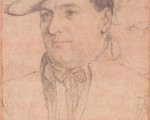
11th December:
1577 – Burial of Benjamin Gonson, Treasurer of the Navy and son of William Gonson, Vice-Admiral of Norfolk and Suffolk from 1536 until 1543. Gonson was buried at St Dunstan’s Church.
1589 – Death of Patrick Lindsay, 6th Lord Lindsay of the Byres, at Struthers Castle in Fife, Scotland. Lindsay was a supporter of the Protestant Reformation, and one of the lords of the congregation. He was one of Mary, Queen of Scots’ guardians when she was imprisoned at Lochleven and was a Privy Councillor after she was deposed as queen.
1607 – Death of Roger Manners, member of Parliament and Constable of Nottingham Castle. He was buried at Uffington Church in Rutland.
1608 – Burial of Douglas Sheffield (née Howard), Lady Sheffield, at St Margaret’s Church, Westminster. Douglas was the eldest daughter of William Howard, 1st Baron Howard of Effingham, and the wife of John Sheffield, 2nd Baron Sheffield. Before her marriage, she served as a Maid of Honour to Elizabeth I. After her husband’s death, she had an affair with Robert Dudley, 1st Earl of Leicester, which resulted in the birth of a son, Sir Robert Dudley, the explorer and cartographer, born in 1574. Douglas claimed that she and Dudley had married in secret when she was pregnant in late 1573, but she could not provide any evidence to support this when her son sought to claim his father’s and uncle’s titles after Elizabeth I’s death. Douglas went on to marry Sir Edward Stafford in 1579.
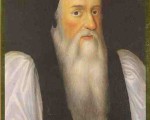
4th December:
1506 – Birth of Thomas Darcy, 1st Baron Darcy of Chiche, courtier and administrator. He was the son of Roger Darcy, Esquire of the Body to Henry VII, and his wife, Elizabeth (née Wentworth). Darcy served as a Privy Councillor in Edward VI’s reign, and also Captain of the Yeoman of the Guard and Lord Chamberlain of the Household. He was arrested for supporting the Duke of Northumberland’s bid to place Lady Jane Grey on the throne, but was pardoned in November 1553.
1514 – Death of Richard Hunne, merchant tailor and leading member of the Lollard community in London. He had been arrested for heresy, and imprisoned in “Lollards’ Tower” in St Paul’s Cathedral on 14th October after the discovery of a Wycliffite Bible at his home, and his body was discovered hanging in his cell from a silk girdle. It was claimed that he had committed suicide, but a coroner’s jury ruled that the hanging had been faked, and that he had been murdered.
1531 – Execution of Rhys ap Gruffudd for treason. He was beheaded after being accused of plotting against the King, although his biographer, R.A. Griffiths, points out that his trial was a “show trial” consisting of contrived testimonies and coached witnesses.
1555 – Papal sentence was passed on Thomas Cranmer in Rome, depriving him of his archbishopric “and of all ecclesiastical dignities”. Permission was also given for the secular authorities to decide on his fate.
1557 – Death of Robert King, Abbot of Thame and Bishop of Oxford. He was buried in Oxford Cathedral. King was one of the judges who sat in judgement at the trial of Thomas Cranmer in 1555.
1585 – Death of John Willock, physician and Scottish reformer, at Loughborough in Leicestershire. He was buried at his church, All Saints, in Loughborough. Willock became the Chaplain of Henry Grey, Marquis of Dorset, and father of Lady Jane Grey, in the 1540s.
1595 – Death of William Whitaker, theologian and Master of St. John’s College, Cambridge, at the master’s lodge after going to bed with a hot “ague”. He was buried at St John’s. His works included Liber precum publicarum (1569), Ad rationes decem Edmundi Campiani jesuitæ responsio (1581), responses to Nicholas Sander and Edmund Campion, Disputatio ad sacra scriptura and Adversus Thomae Stapletoni (1594).
1609 – Death of Alexander Hume, Scottish poet and writer. He is known for his 1599 “Hymnes, or Sacred Songs”, which includes his great poem “Of the Day Estivall” which describes a summer’s day, from dawn until dusk.
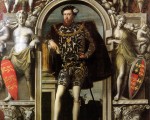
27th November:
1531 (some say 4th December) – Burning of Richard Bayfield, Benedictine monk and reformist, at Smithfield for heresy. Sir Thomas More caught Bayfield importing Lutheran books into England, and he was tried by John Stokesley, Bishop of London, at St Paul’s on 10th November 1531, and convicted.
1544 – Death of Sir Edward Baynton, soldier, courtier and Vice-Chamberlain to five of Henry VIII’s wives, in France. His cause of death is unknown, but he may have been wounded while serving as a soldier in France. Baynton had arranged to be buried at Bromham, but it appears that he was buried in France.
1556 – Death of Henry Parker, 10th Baron Morley, nobleman, diplomat, translator and father of Jane Boleyn (wife of George Boleyn), at his home, Hallingbury Place, Great Hallingbury, Essex. He was in his late seventies at the time of his death. He was buried at St Giles’s Church, Great Hallingbury. Click here to read more about this interesting Tudor man.
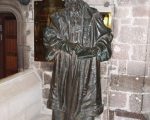
On 24th November 1572, the Scottish clergyman, famous Reformer and founder of Presbyterianism, John Knox, died at his home in Edinburgh as his wife read aloud from Paul’s First Letter to the Corinthians. He was buried in the cemetery of St Giles’ Cathedral, Edinburgh, where he had served as minister. Knox is known for bringing the Protestant Reformation to the church in Scotland.
Here are some details about his life and works from Claire’s book On This Day in Tudor History:
John Knox was born in c.1514 at Giffordgate in Haddington and was the son of William Knox, whose family had served the Earls of Bothwell for many years. John studied at St Andrews University under John Mair before entering the Church.
[Read More...]